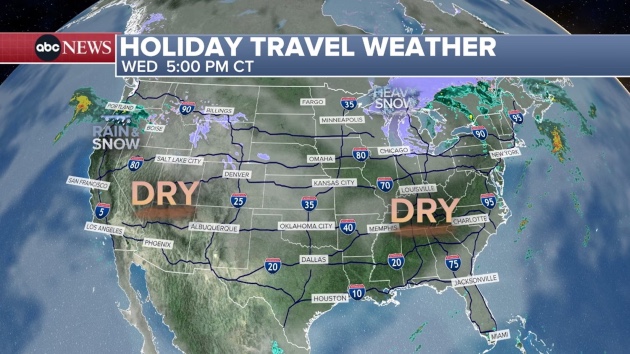‘Barn of horrors’: Investigators recall clues that led to body of missing Ohio woman Sierah Joughin
Written by ABC Audio ALL RIGHTS RESERVED on October 27, 2023

(TOLEDO, Ohio) — The disappearance of a young woman from rural Ohio in the summer of 2016 left behind chilling clues discovered in a dark cornfield and a so-called “barn of horrors” owned by a local man with a history of abduction.
Sierah Joughin, 20, was on break from the University of Toledo when she vanished while riding her bicycle home from her boyfriend’s house on the evening of July 19, 2016. Her boyfriend had followed her on his motorcycle for part of the trip. At her request, the two parted ways a short distance from her home in the town of Metamora.
“I remember exactly what I said. I kissed her, I told her I loved her and to text me when she got home,” Josh Kolasinski, Joughin’s boyfriend, told ABC News.
But Joughin never made it home, and that was the last time she was ever seen alive.
A new “20/20” airing Oct. 27 at 9 p.m. ET explores the abduction case, featuring interviews from investigators and Joughin’s loved ones.
After Joughin didn’t return home from the bike ride, her family alerted police. Later that evening, a sheriff’s deputy found her purple bicycle in a cornfield just a half mile away from the home.
Megan Roberts, a special agent with the Ohio Bureau of Criminal Investigation, got a call around 1 a.m. in the morning asking her to assist in processing the crime scene.
Investigators combed the area and found more clues tucked into the cornfield — a screwdriver, men’s sunglasses, a sock, a set of fuse boxes, motorcycle tracks and evidence of a struggle indicated by broken cornstalks and cornstalks with streaks of blood on them.
“It made the hair on the back of my neck stand up. You just had this eerie feeling that you knew that this was an abduction site,” Roberts said.
Authorities kept a tight lid on what they found and blocked the road leading to the site. Joughin’s family were left on edge and wondering what authorities had discovered.
“They said, ‘We’re not letting anybody down there,’” Joughin’s mom, Sheila Vaculik, told ABC News. “All’s they could say was that they were investigating.”
When the FBI alerted the family of the bike’s discovery the next morning, they knew something was seriously wrong. The community launched a massive search, walking through the cornfields and scanning for any signs of Joughin.
Police received a bloodstained helmet from a farmer who found it on the side of the road the night Joughin went missing. The farmer brought it to police the next day when he saw the news of Joughin’s disappearance.
Based on the evidence, investigators believed someone riding a motorcycle was involved. They say they had to look at Joughin’s boyfriend as a potential suspect, since he rode a motorcycle and was the last person to see her alive, according to retired Cleveland FBI agent Vicki Anderson-Gregg, who worked on the case.
Kolasinski cooperated with authorities. He drew a map for them of Joughin’s route showing where the couple departed and consented to searches of his residence, motorcycle and truck, according to investigators.
Joughin’s family said Kolasinski took good care of Joughin and they never had any suspicion he was involved with her disappearance.
“We weren’t able to find anything that put us in the direction that Josh had any involvement,” investigator Mark Evans said.
Having cleared her boyfriend, investigators then turned to the likelihood that a stranger may have abducted Joughin on her ride home, possibly in a crime of opportunity.
A break in the case came while investigators were knocking on nearby residents’ doors. Maj. Matt Smithmyer with the Fulton County Sheriff’s Office said there were several stops he wanted to make, one being the home of James Worley — a man who lived on County Road 6 — the same road that Joughin lived on. Investigators showed up on just a hunch, but to their surprise, they said Worley began acting suspiciously and even made self-incriminating statements placing himself at the scene of Joughin’s suspected abduction.
“Mr. Worley makes a statement about how he was riding his motorcycle. And his bike is having issues. It sputters out. He goes into a cornfield. And he mentions that he lost his helmet, his fuses, his screwdriver and his sunglasses,” Cleveland FBI agent Devon Lossick said.
“I kind of had to stop my jaw from falling. None of that had been released to the media yet,” Lossick said.
When police executed a search warrant on Worley’s barn, they found a crate filled with women’s lingerie and an empty, blood-stained freezer buried underground.
Three days after Joughin’s disappearance, Worley was arrested and charged with her abduction. Later that day, Joughin’s body was discovered tied up, bound and gagged in a shallow grave in another cornfield 2 miles from Worley’s home. Worley was then hit with additional charges, including aggravated murder, kidnapping and felonious assault.
Vaculik said of learning about the heart-wrenching discovery, “It was horrible. Everybody was sobbing and crying and falling to their knees. It was painful, and it just literally sucks the life right out of you.”
Based on the forensic evidence collected at the abduction site and Worley’s barn, investigators believe Worley passed by Joughin on his motorcycle, hid in a cornfield further up the road, then attacked Joughin as she rode by on her bicycle, hitting her in the head with his helmet. They believe Worley then left the scene and returned with his truck, abducted her and took her to his barn, where he kept her until she asphyxiated and then disposed of her body.
There was no evidence of sexual assault, according to investigators.
Investigators say each crime scene was linked to Worley and Joughin through DNA found on the items obtained as evidence.
But before Sierah Joughin there was Robin Gardner, a woman who was abducted by Worley under eerily similar circumstances in 1990 and lived to tell her story. She detailed her ordeal in an interview with ABC News.
Gardner testified in court at the murder trial for Worley, who had pleaded guilty to abducting Gardner and served three years in prison.
“I felt very strongly I had to be [Sierah’s] voice. I knew the fear. She wasn’t there. I had to speak for her,” Gardner told ABC News.
Worley pleaded not guilty to all charges at his murder trial. His defense argued that the lack of Worley’s DNA on some of the evidence meant there was reasonable doubt he kidnapped and murdered Sierah.
The jury found Worley guilty on all counts against him. He was sentenced to death and is on death row awaiting execution. His conviction was upheld by the Ohio Supreme Court, but Worley is now exploring a federal appeal.
In 1996, Worley was questioned by police over the disappearance of Claudia Tinsley after her mother reported she last saw her daughter leaving in Worley’s car, retired Toledo police detective Rick Molnar said.
Molnar said that Worley told police he drove around for 45 minutes before dropping her off. Worley denied playing any role in Tinsley’s disappearance, something he recently reiterated to “20/20” in a prison letter. He has never been charged with any crime related to the case.
In the aftermath of the tragedy, Joughin’s aunt, Tara Ice, founded Justice for Sierah, a non-profit organization dedicated to making the community safer from repeat offenders. Their advocacy resulted in the passage of Sierah’s Law – an Ohio statute that created a searchable violent criminal database.
“It’s just amazing that [Sierah] is continuing to make changes in this world,” said Cathy Shaffer, Sierah’s grandmother.
Copyright © 2023, ABC Audio. All rights reserved.

 KVSP
KVSP 




